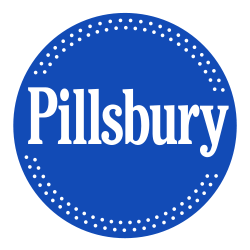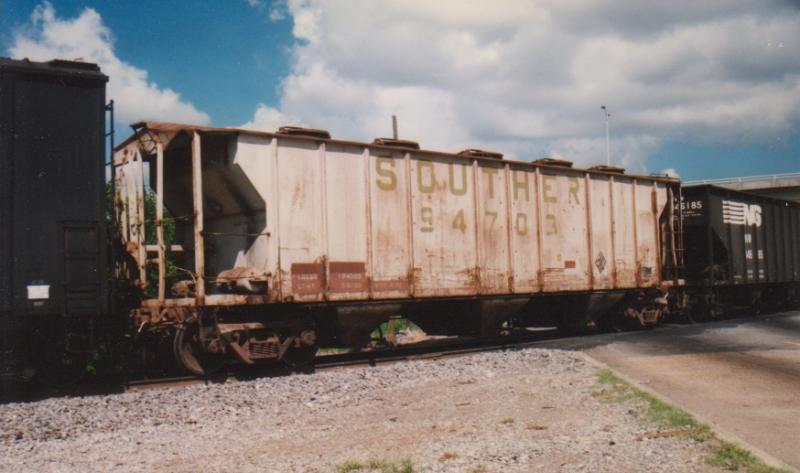Specific Item Information: Price listed in the 1988 Con-Cor Trainalog as a new item.
Model Information: This model was made by Roco starting in the late 1960s. It first appears in the 1967 Atlas catalog and is labeled '47 ft, Covered Hopper'. It was also imported by Minitrix and Con-Cor. Atlas started made their own similar version of this car starting in the 1970s. The Roco versions can easily be distinguished as they are stamped 'Austria' on the bottom, like the very similar model that Roco produced for Atlas, this tooling also loosely resembles a PS-2 2893 hopper.
Prototype History: Pullman-Standard dominated the covered hopper car market beginning in the 1950s, thanks to the design success of their PS-2 series of covered hoppers. Designed to carry bulk commodities, such as grain, cement and plastic pellets, these cars roamed the rails of North America for decades, attesting to their utilitarian functionality. The 2893 c.f. model has a capacity of 70 tons and has a 4-3-4 post arrangement. The roof hatches are not spaced evenly. These cars featured side ladders at the right hand end whereas later PS models used grab irons.
Road Name History:  Pillsbury is an American brand name used by Minneapolis-based General Mills and Orrville, Ohio-based J.M. Smucker Company. Historically, the Pillsbury Company, also based in Minneapolis, was a rival company to General Mills and was one of the world's largest producers of grain and other foodstuffs until it was bought out by General Mills in 2001. Antitrust law required General Mills to sell off some of the products. General Mills kept the rights to refrigerated and frozen Pillsbury products, while dry baking products and frosting are now sold by Smucker under license.
Pillsbury is an American brand name used by Minneapolis-based General Mills and Orrville, Ohio-based J.M. Smucker Company. Historically, the Pillsbury Company, also based in Minneapolis, was a rival company to General Mills and was one of the world's largest producers of grain and other foodstuffs until it was bought out by General Mills in 2001. Antitrust law required General Mills to sell off some of the products. General Mills kept the rights to refrigerated and frozen Pillsbury products, while dry baking products and frosting are now sold by Smucker under license.
C.A. Pillsbury and Company was founded in 1872 by Charles Alfred Pillsbury and his uncle John S. Pillsbury. The company was second only to Washburn-Crosby to use steel rollers for processing grain in the United States. The finished product required transportation, so the Pillsburys assisted in funding railroad development in Minnesota.

C.A. Pillsbury and Company was founded in 1872 by Charles Alfred Pillsbury and his uncle John S. Pillsbury. The company was second only to Washburn-Crosby to use steel rollers for processing grain in the United States. The finished product required transportation, so the Pillsburys assisted in funding railroad development in Minnesota.
Brand/Importer Information: Con-Cor has been in business since 1962. Many things have changed over time as originally they were a complete manufacturing operation in the USA and at one time had upwards of 45 employees. They not only designed the models,but they also built their own molds, did injection molding, painting, printing and packaging on their models.
Currently, most of their manufacturing has been moved overseas and now they import 90% of their products as totally finished goods, or in finished components. They only do some incidental manufacturing today within the USA.
Important Note: The Con-Cor product numbering can be very confusing. Please see here in the article how to properly enter Con-Cor stock numbers in the TroveStar database.
Currently, most of their manufacturing has been moved overseas and now they import 90% of their products as totally finished goods, or in finished components. They only do some incidental manufacturing today within the USA.
Important Note: The Con-Cor product numbering can be very confusing. Please see here in the article how to properly enter Con-Cor stock numbers in the TroveStar database.
Manufacturer Information:  The company was founded in 1960 by Ing. Heinz Rössler and started with a plastic Minitanks series of military vehicles. After export to the USA became successful, the model line was expanded with model trains in HO scale and the smaller N scale. TT scale was also subsequently added to the product line. The model rail product line covers many European countries including Germany, Belgium, Luxembourg, France, Spain, Austria, Italy, Switzerland, Sweden and the Netherlands, and also the USA.
The company was founded in 1960 by Ing. Heinz Rössler and started with a plastic Minitanks series of military vehicles. After export to the USA became successful, the model line was expanded with model trains in HO scale and the smaller N scale. TT scale was also subsequently added to the product line. The model rail product line covers many European countries including Germany, Belgium, Luxembourg, France, Spain, Austria, Italy, Switzerland, Sweden and the Netherlands, and also the USA.
On July 15, 2005 ROCO Modellspielwaren GmbH was declared bankrupt. From July 25 the company continues as Modelleisenbahn GmbH, but still uses the Roco brand and associated logo. On October 1, 2007, distribution of the 'Minitank' product series was assigned to the German model car manufacturer Herpa.
Since February 2008 Modelleisenbahn also owns Fleischmann, which like Roco had gone bankrupt. The two companies continue as separate brands under Modelleisenbahn GmbH, while benefiting from economies of scale through joined development projects, marketing and procurement.
From Wikipedia

On July 15, 2005 ROCO Modellspielwaren GmbH was declared bankrupt. From July 25 the company continues as Modelleisenbahn GmbH, but still uses the Roco brand and associated logo. On October 1, 2007, distribution of the 'Minitank' product series was assigned to the German model car manufacturer Herpa.
Since February 2008 Modelleisenbahn also owns Fleischmann, which like Roco had gone bankrupt. The two companies continue as separate brands under Modelleisenbahn GmbH, while benefiting from economies of scale through joined development projects, marketing and procurement.
From Wikipedia
Item created by: gdm on 2018-02-28 12:53:42. Last edited by CNW400 on 2020-05-15 23:43:35
If you see errors or missing data in this entry, please feel free to log in and edit it. Anyone with a Gmail account can log in instantly.
If you see errors or missing data in this entry, please feel free to log in and edit it. Anyone with a Gmail account can log in instantly.










